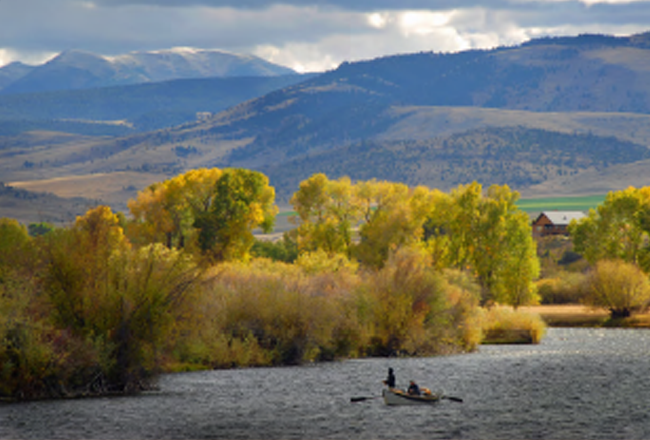Regulations
Regulations for upcoming seasons are posted online throughout the year. Bison regulations are typically posted early March.
All downloads below are in PDF format.
Maps
Mandatory Harvest Reporting
A hunter harvesting a bison must report their harvested bison to FWP within 48 hours.
Plan Your Hunt Online
Launch maps, obtain legal descriptions, regulations, and statistics all in one place.
These dates are provided only as a general reference. Check current regulations or use FWP's online Hunt Planner for specific dates.
2025 SEASON
Nov. 15 - Feb. 15, 2024
Bison License
Details: Prerequisite licenses are Conservation and Base Hunting in order to apply. There is an additional $10 resident or $50 nonresident nonrefundable application fee for each license or permit you apply for.
A hunter may hold only one bison license.
Fees:
-
Resident: $125
-
Nonresident: $1,250
Deadline
May 1
Availability
This license is available via Special Drawing.
Successful either-sex bison license applicants will receive a letter with instructions to view online bison hunter orientation.
Those interested in entering a lottery for a guided guaranteed bison hunt on the Blackfeet Reservation have more than one opportunity to enter the drawing. Learn More
Hunters wishing to use archery equipment to hunt bison in Montana must complete an orientation consisting of these steps:
-
Watch the archery orientation video.
-
Answer the questions that follow the orientation video.
-
After completing the questions, submit your name in order to notify FWP that your completed the orientation and print your certificate.
-
If you haven’t done so already, look over the information provided on this page for maps, frequently asked questions, and a video with important information specific to hunting bison in Montana.
Questions
In order to hunt bison with archery equipment, you MUST answer the questions related to the orientation video. Also, you MUST print and retain your certificate (or certificate number) as this is your proof of having completed the archery orientation prior to hunting.
Montana Bowhunters Association
For additional information on archery hunting, contact the Montana Bowhunters Association .
Read a related article in the Montana Bowhunter Association Magazine:
Where should I apply to hunt — Gardiner or West Yellowstone?
Which area a hunter chooses depends on the kind of hunting experience he or she wants. Following is a general description of each hunting district:
Hunting District 385 (Gardiner area)
Bison will most likely be found in the Gardiner Basin. It is fairly open country with rolling sage brush-covered hills. It is mostly Gallatin National Forest land with very limited private lands. There are Forest Service roads, although hunters should check with the Gallatin National Forest Gardiner Ranger District (406-848-7375) for road closures and types of motorized use allowed. There is generally not a lot of snow accumulation in this area. Access on foot or horseback is likely throughout the season.
Hunting District 395 (West Yellowstone area)
Bison will most likely be found in the West Yellowstone Basin. It is not likely they will be in the Cabin Creek-Monument Mountain area. The area has open rolling sage brush-covered hills and sage brush flats, as well as lodge pole pine forested habitat. It is primarily Gallatin National Forest land with some private lands that bison use. Hunters should note there are some private subdivisions in the West Yellowstone basin where landowners do not allow bison hunting. We ask that hunters be respectful of these landowners (there is a public road in one of these areas and there have been some conflicts between landowners and bison hunters). There are numerous Forest Service roads, although hunters should check with the Gallatin National Forest Hebgen Lake Ranger District (406-646-7369) for road closures and types of motorized use allowed. Snow accumulation can be significant in the West Yellowstone Basin. Generally as the season progresses, access by snowmobile, snowshoes, or skis is all that's possible.
Which hunting district has more bison?
This changes from year to year. Bison in Yellowstone National Park migrate in sub-herds, some to the Gardiner area and some to the West Yellowstone area. The bison migration is dependent on the weather and access to forage. As snow accumulates at the higher elevations in Yellowstone National Park, bison begin to migrate to the lower elevations in Montana. Migration is also dependent to some degree on the total number of bison in the population. From year to year, bison availability has varied. Hunt availability is dictated by migration. Some years this means only a handful of bison landscape on the Montana landscape, and in others there could be dozens to hundreds during the hunt period.
Can FWP tell me where I'll find bison?
The 2013 Montana Legislature granted Montana Fish, Wildlife & Parks the ability to provide hunters with general hunt information regarding areas where bison may be found. FWP is committed to ensuring a fair chase hunt for bison. Hunters should not expect to be told the exact location of individual bison—only areas in which bison have been spotted. It is important for hunters to keep in mind that bison can change locations frequently, often from day to day.
How many people applied for a license in past years?
How many bison were harvested in either hunting district in past years?
If I draw an either-sex bison license, when do I have to purchase it?
Bison hunters only need to purchase their license prior to hunting. FWP recommends either-sex license holders wait to purchase the license until there are sufficient numbers of bison available to hunt. Hunters can purchase bison licenses at any FWP regional or area office.
Is my license a guarantee I'll get a bison?
A bison license is not a guarantee that a hunter will harvest a bison. The availability of bison in a hunting district during a hunt period will depend primarily on weather and migratory patterns. Each of the past bison hunting seasons has been unique in terms of when (or if) bison migrated and in what numbers.
What about Native American tribes hunting bison?
There are Native American tribes who have aboriginal rights to hunt bison in Montana under treaties with the U.S. Government. These are legal hunting rights and tribes will be out hunting during the State of Montana bison hunt. Tribal treaty hunters will follow their own rules and regulations, however, state laws and regulations will apply in cases involving public safety and bison conservation.
What if my bison has brucellosis? Is it safe to eat the meat?
Brucellosis is a bacterial disease that affects many Yellowstone bison. Extra precautions are required when field dressing and processing bison carcasses. Although rare, brucellosis can infect people. In people it's called Bangs disease or undulant fever. The bacteria are concentrated in the reproductive tract and lymph nodes. Thorough cooking destroys bacteria that may be present in the meat, making it safe to eat. To protect themselves when handling a carcass, hunters should.
-
Assume every bison is potentially infected with brucellosis
-
Always wear protective gloves when handling the carcass and viscera
-
Avoid direct contact with materials from reproductive tract or milk
-
Avoid touching eyes, nose, and mouth until you have washed properly
-
Be extra careful of you have open sores or cuts
-
Discard organ meat and cook all meat you are going to consume thoroughly
Who do I contact for additional information?
Montana Fish, Wildlife & Parks
Gallatin National Forest
-
To purchase Gallatin National Forest maps — Bozeman Ranger District: (406) 522-2520
-
For HD 385 forest road closures and access information — Gardiner Ranger District: (406) 848-7375
-
For HD 395 forest road closures and access information — Hebgen Lake Ranger District: (406) 646-7369



